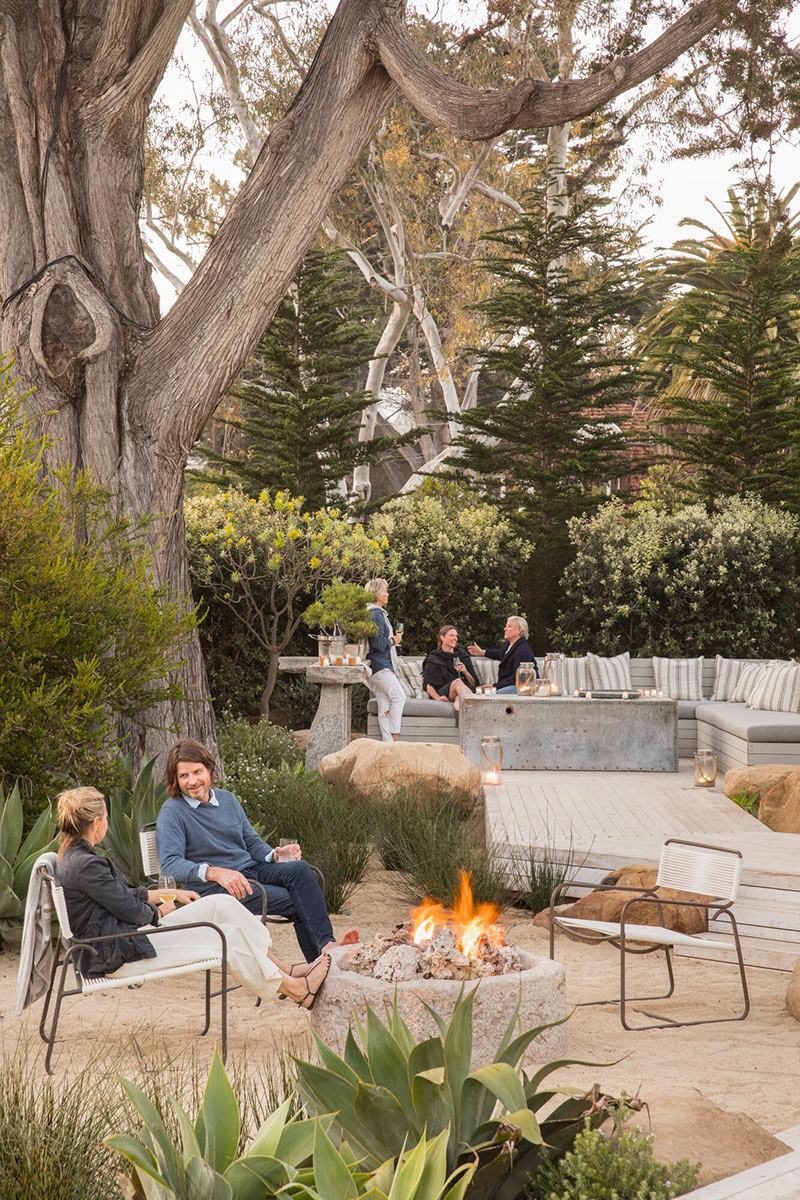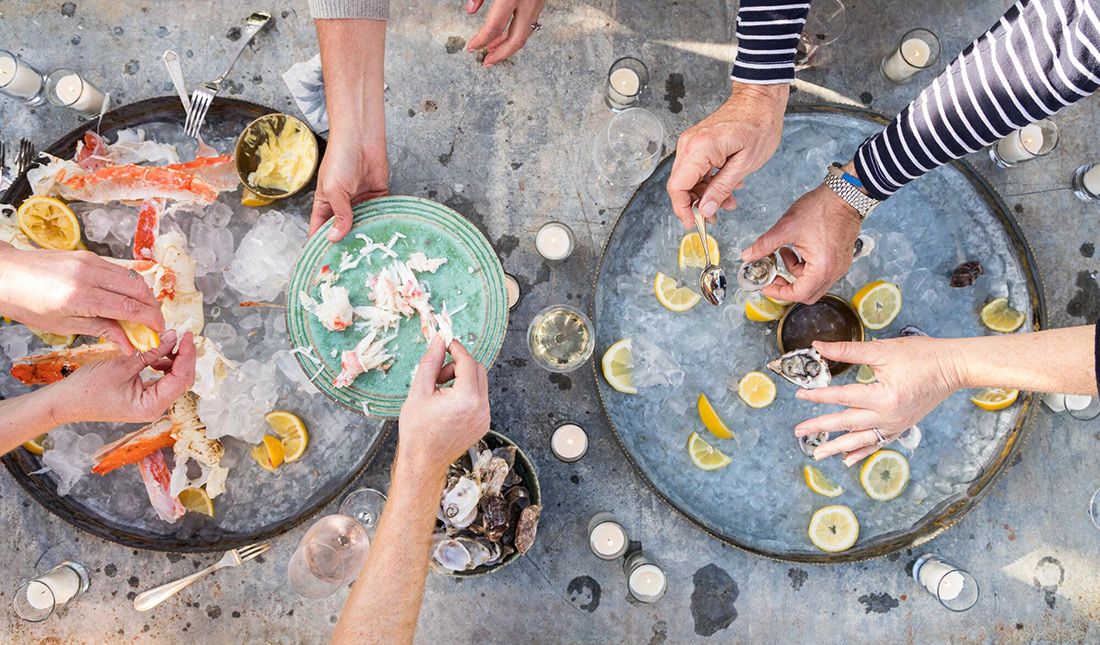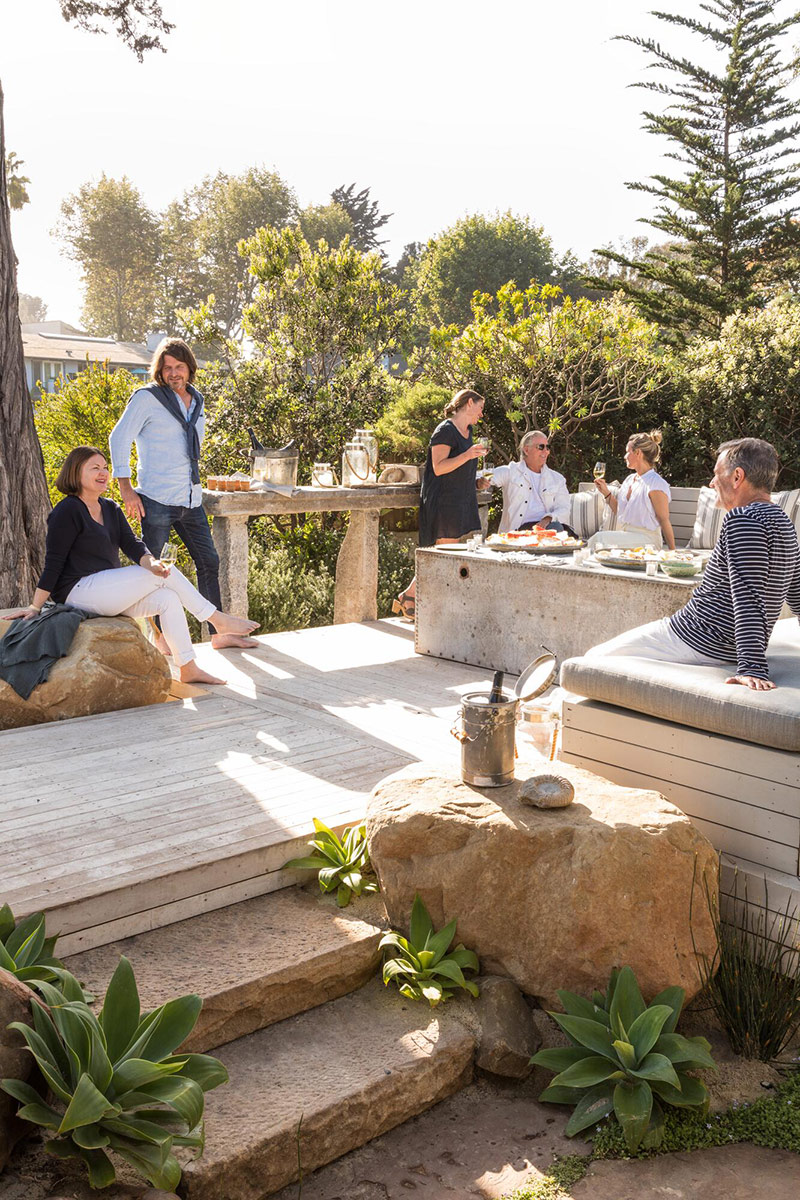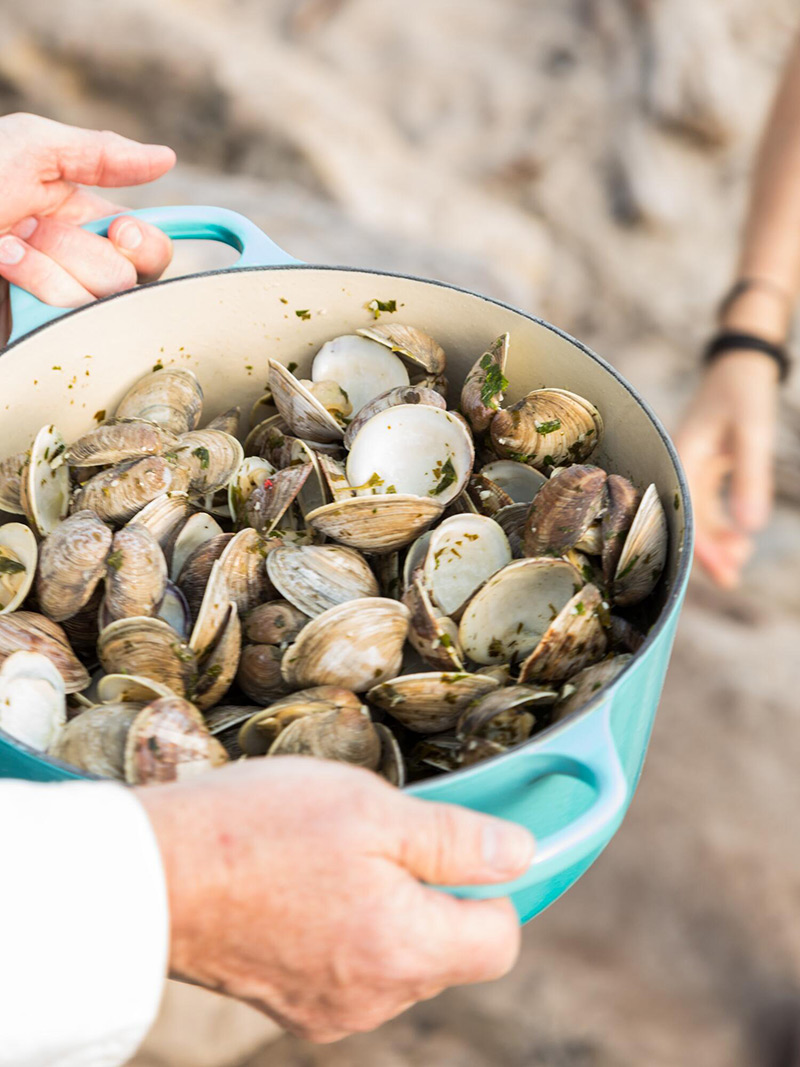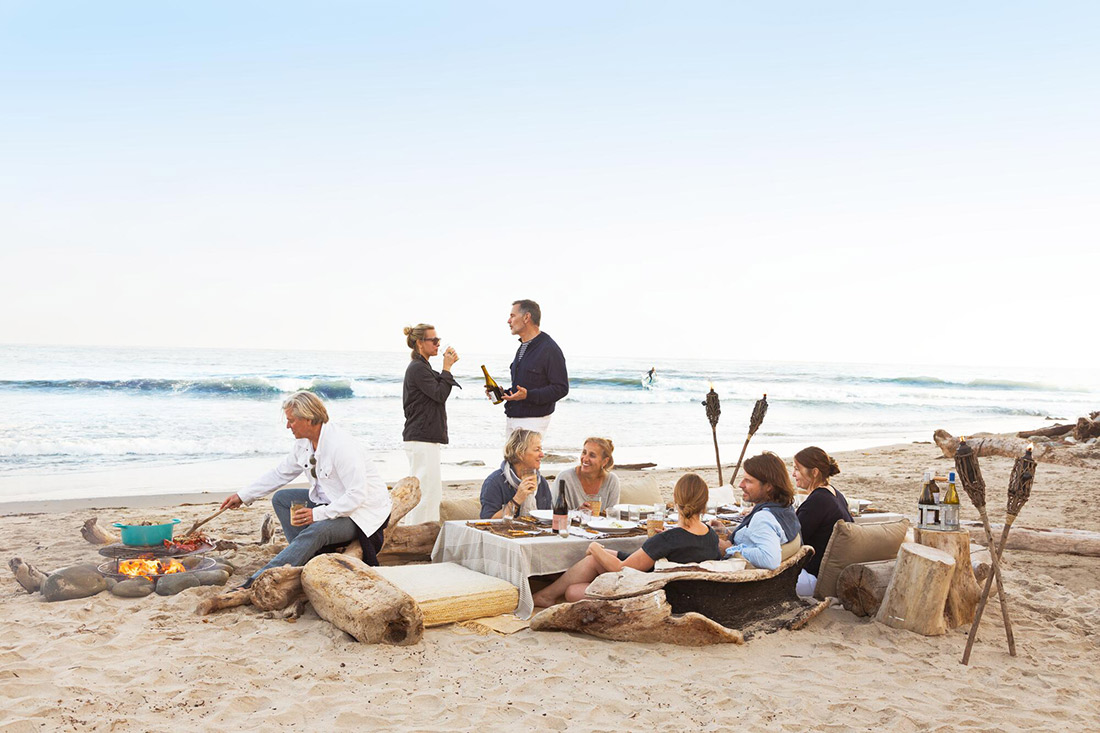Not so long ago, a 1920s cottage on Rincon Point, just south of the city of Santa Barbara, was purchased by a new owner who had a new vision for the property just off a beach that is a beloved spot for surfers from around the world.
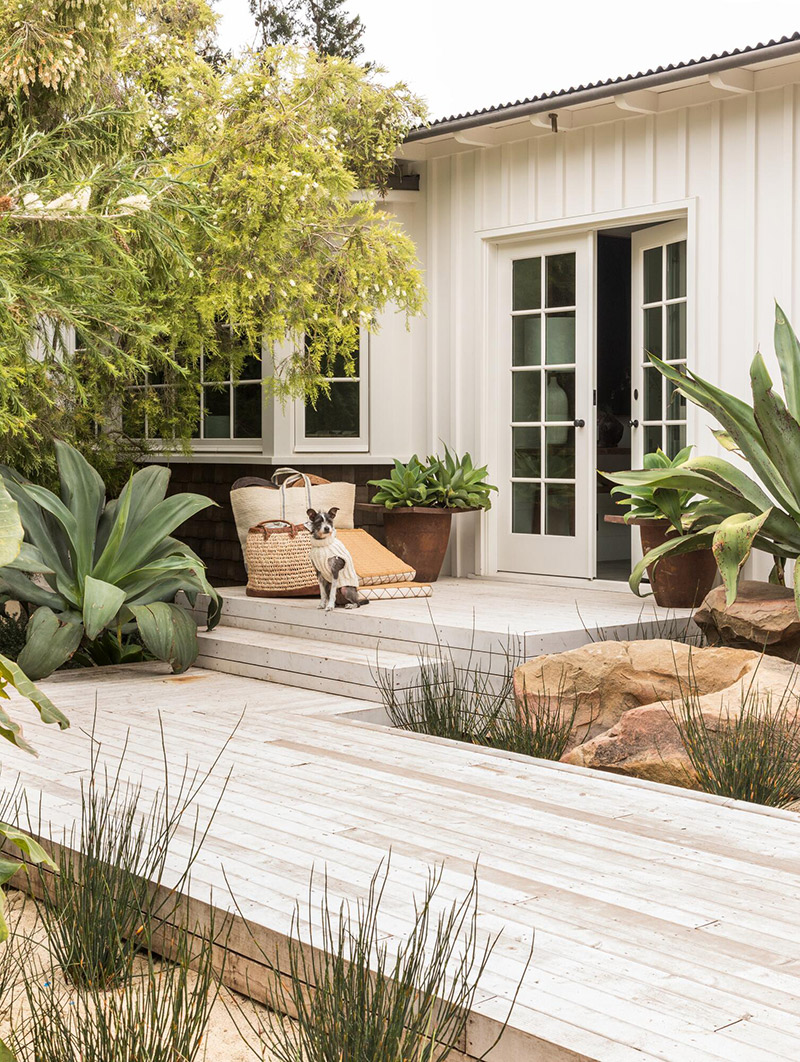

A new owner may have wanted a sophisticated, preciously beautiful California beach house. But landscape designer Scott Shrader, architect CJ Paone AIA, and the homeowner had other plans: a small project that would lean into nature, reflecting all the random lifeforce and wild beauty that marks this patch of quintessential coastline.
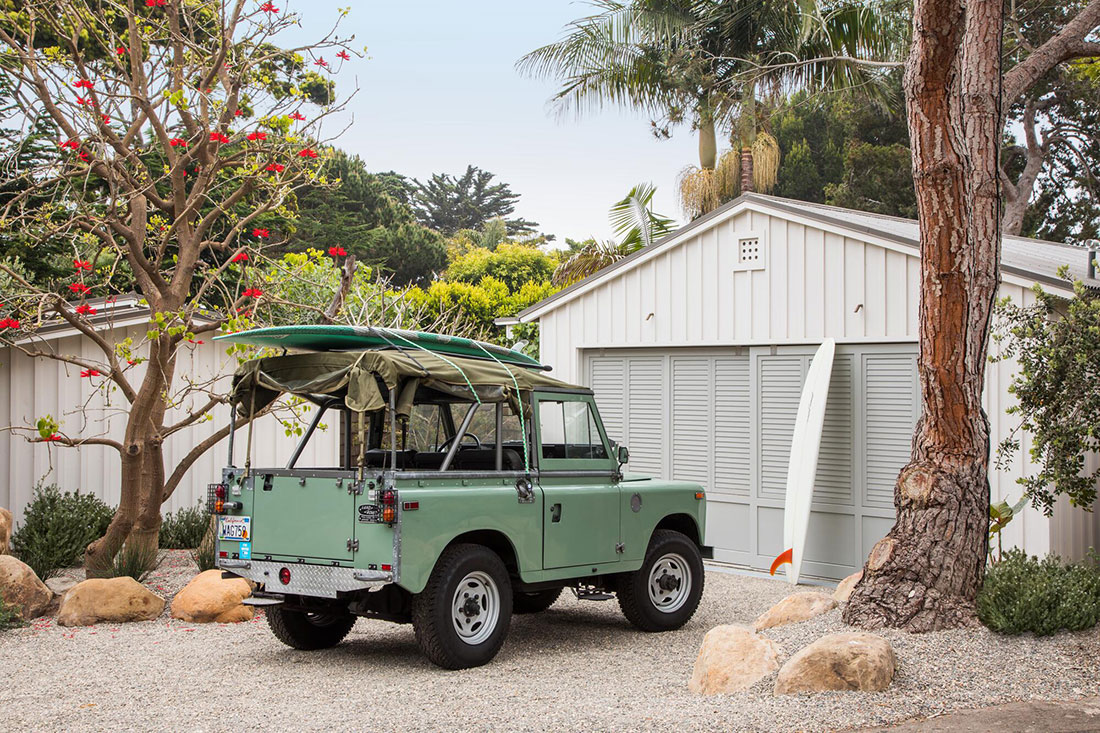

The house, nicknamed The Sandbox, is a spare, simple beauty with an inviting air of nostalgia. Both Paone and Shrader knew the home itself should settle on the land in simple fashion and yield the spotlight to a landscape that is as livable as the house, with a muted segue from outdoors to inside.
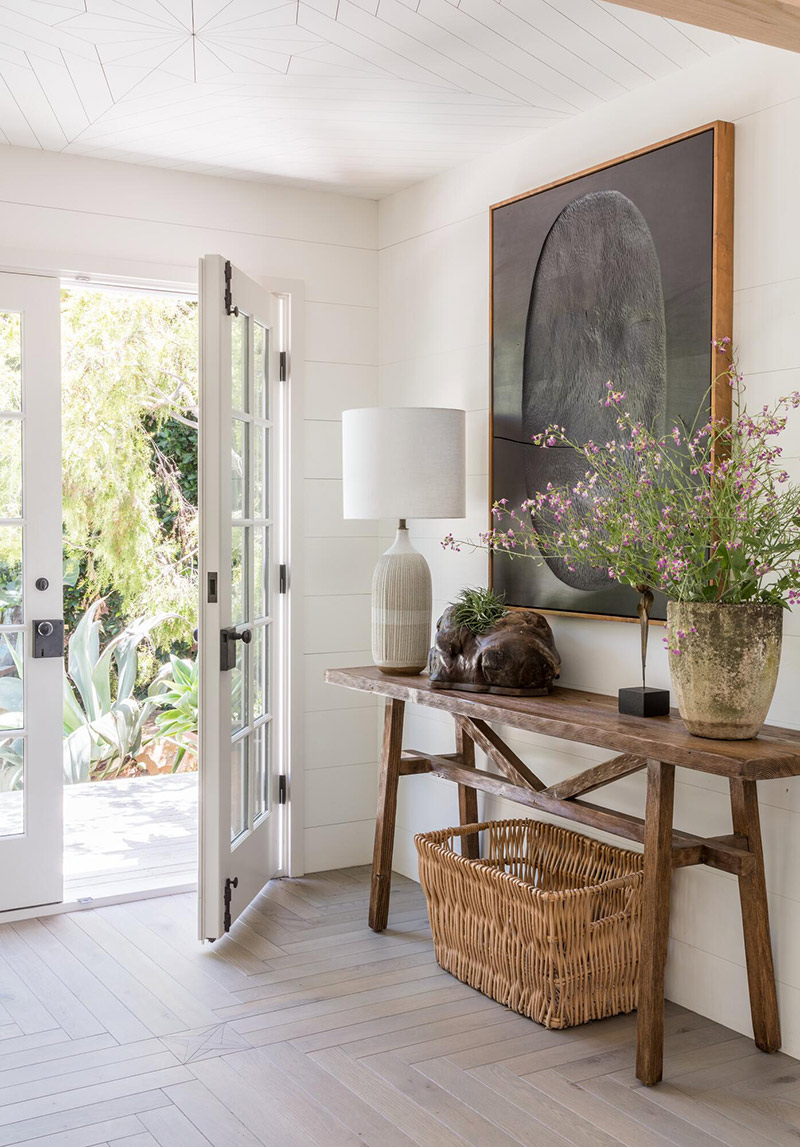

“I developed a story that the house had been hit by a tsunami,” says Shrader, principal of Shrader Design in West Hollywood, whose clientele includes Cher, Ellen DeGeneres, and Lionel Richie. “After it passed, as the story goes, it left an almost accidental landscape of boulders, sand, and boardwalks.”
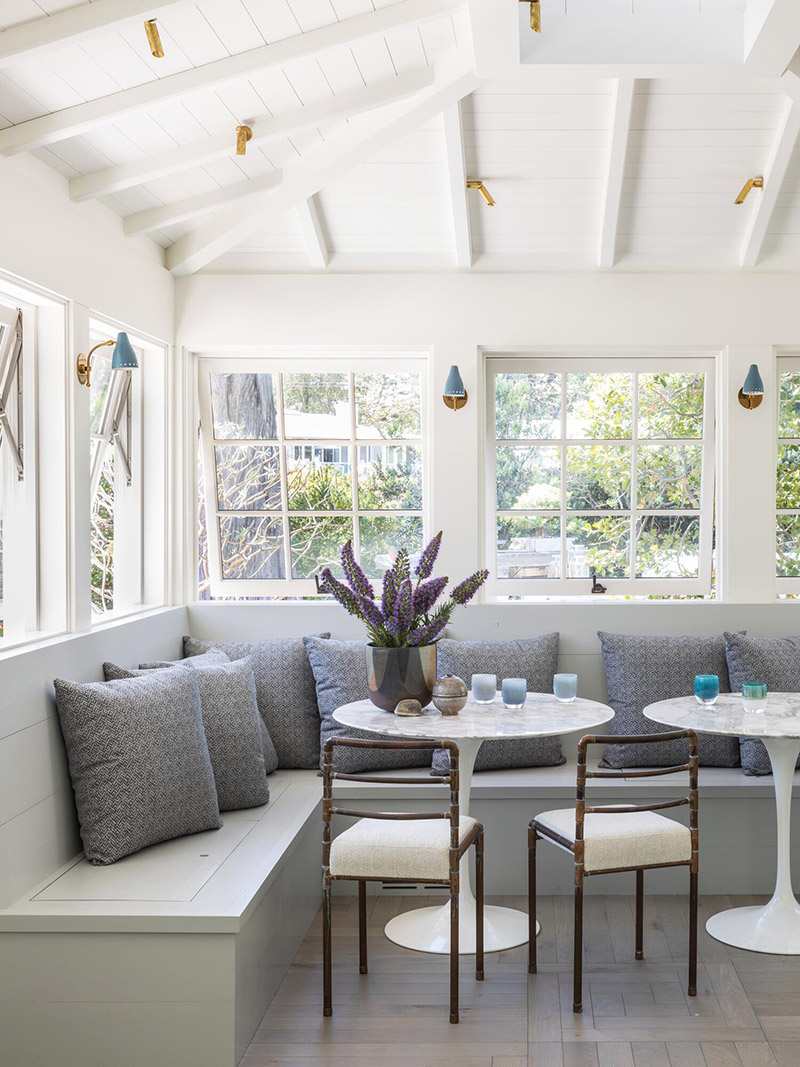

The random effect, translated into landscape design, has created a treasure of spots for gathering groups or sitting quietly. Boulders became chairs. Repurposed wood and stone became tables. Boardwalks connect spaces with each other and the ocean and invite guests to linger in the sand. “The purpose of the floors and plans outside are the same as those inside,” Shrader says. “While I’m also one to love and appreciate the value of a beautiful space or garden, I’m most interested in blurring the lines between inside and out.”
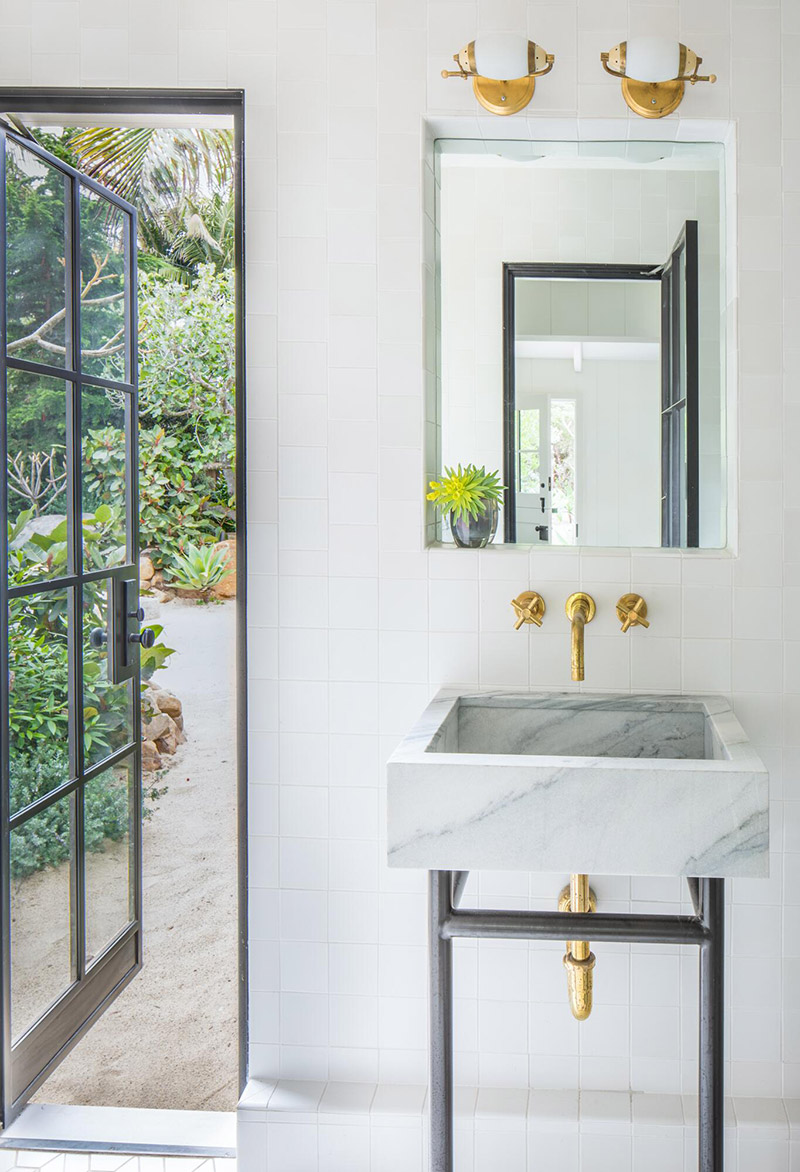

One of the sweetest spots is a seating area—anchored by a banquette and a console of repurposed metal—that began as the former home’s entryway. Views here abound, with glimpses of Rincon’s dramatic point break, an estuary that runs from Santa Barbara, and the Pacific, with its spectacular waves and surfers who relish the long rides it affords.
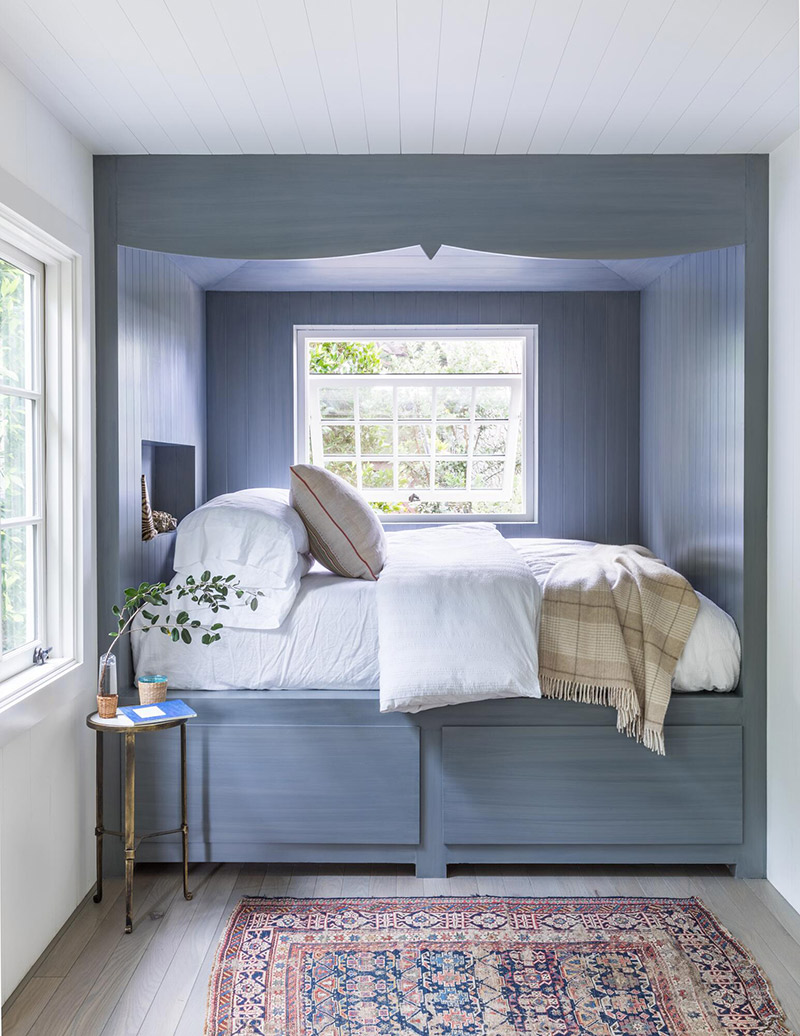

Paone, the principal of Archipelago Workshop in Ventura, has worked in concert with Shrader for more than 10 years. Collaborating on The Sandbox meant working with the existing footprint and strict site limitations. “The question was, how do we make it feel spacious but cozy, especially the bedrooms,” Paone says. His solution: Design boldly skylit hallways which open to spacious rooms, enveloped by a color palette of china-white tones punctuated with blue and violet shades that just get better in natural sunlight. As Paone notes, “the interior becomes a study more in form and light than in color.”
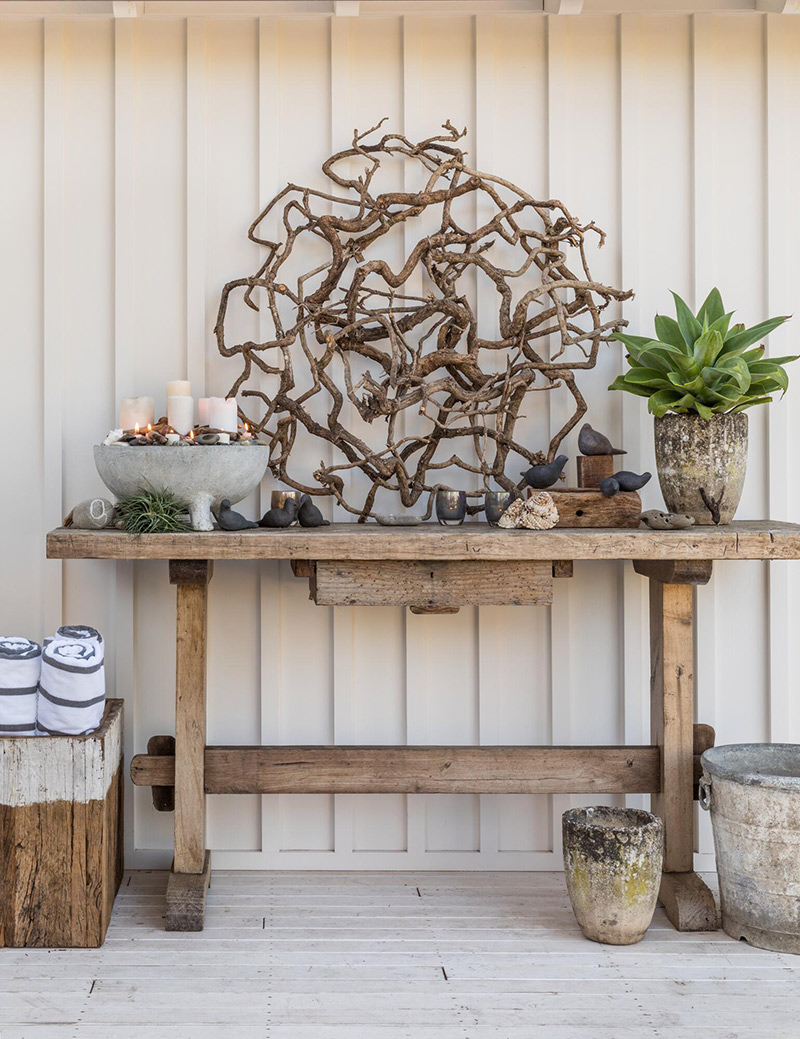

The house, a modest 2,300 square feet with a 400-square-foot garage, is built on an open plan, with space for gathering guests and privacy without a feeling of constraint. Custom details by local artisans, precision cabinetry, and furniture constructed of natural materials—some of it built-in—draw the eye and give flight to the imagination. Subtle space-saving devices include pocket doors and niches for beds in the home’s two bedrooms, as well as in a cozy library and office that can serve as guestrooms. The kitchen, while open enough for the cook to mix easily with guests, is cleverly downplayed from view of the living room with a mirror and art. The kitchen’s L shape allows for an out-of-sight nook that serves as a pantry and work area.
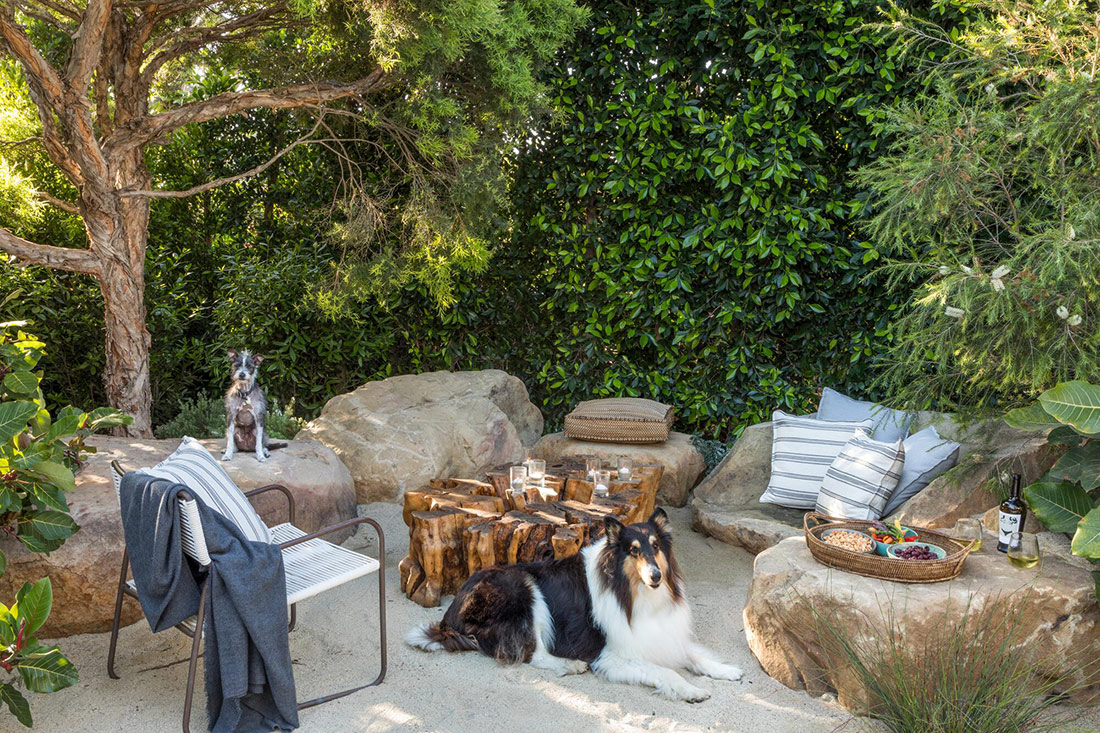

Paone drew on Scandinavian and French Colonial influences, as well as what he calls “a shipbuilder’s mindset” for The Sandbox, which won an award from the American Institute of Architects Santa Barbara Chapter. He has long been drawn to some of Swedish architecture’s nuances.
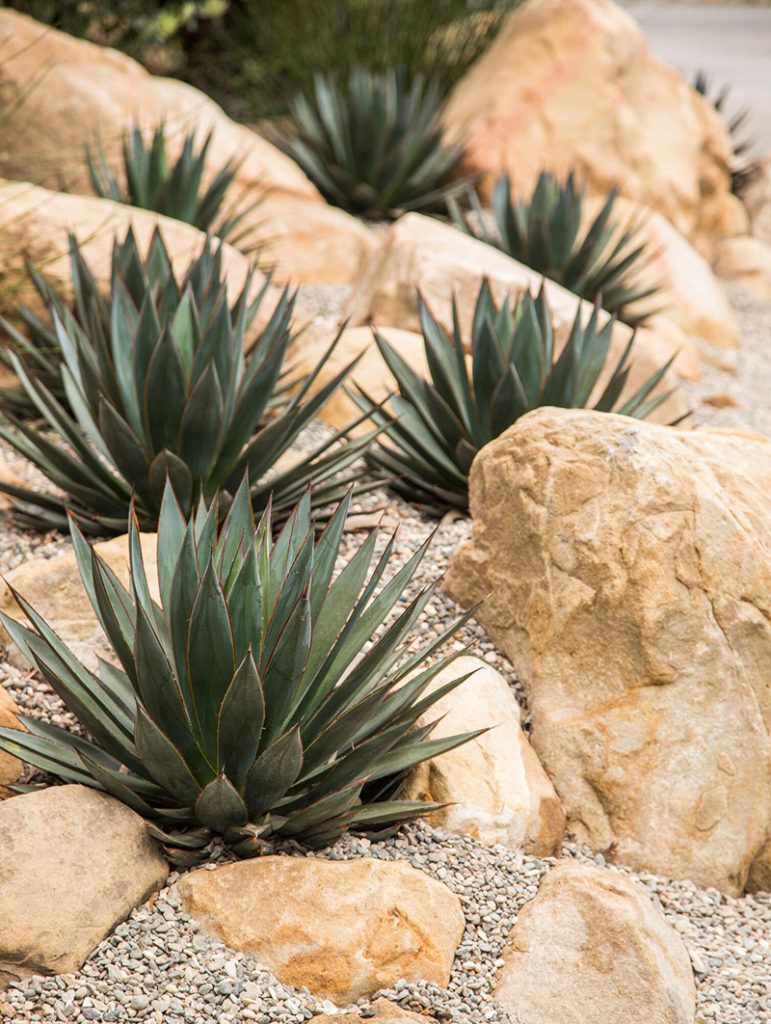

“Swedish architecture has something special about it; it’s refined but soft. It wears well and ages gracefully,” Paone says. Swedish building techniques, which commonly scale down interior features, are present in The Sandbox’s petite size, including small door frames, hardware, and the even the boards in the board-and-batten walls. Paone sees the house and the landscape “expanding and contracting,” mirroring the way people take in experiences, and the way life is lived.”
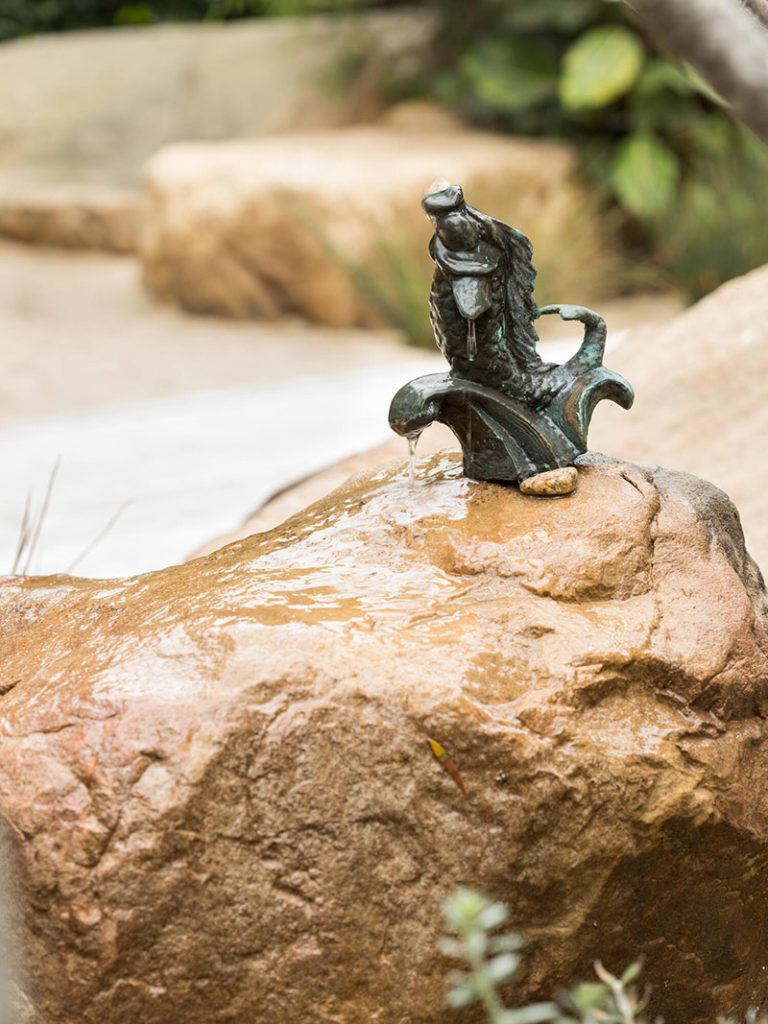

Shrader, the author of The Art of Outdoor Living: Gardens for Entertaining Family and Friends (Rizzoli), still dotes on The Sandbox property, occasionally visiting to watch it mature and grow and, while he is there, to drink in the beauty of the landscape’s centerpiece, a beautiful mature Monterey cypress tree. Other plantings—including salt-loving plants such as agave and Metrosideros—are bountiful.
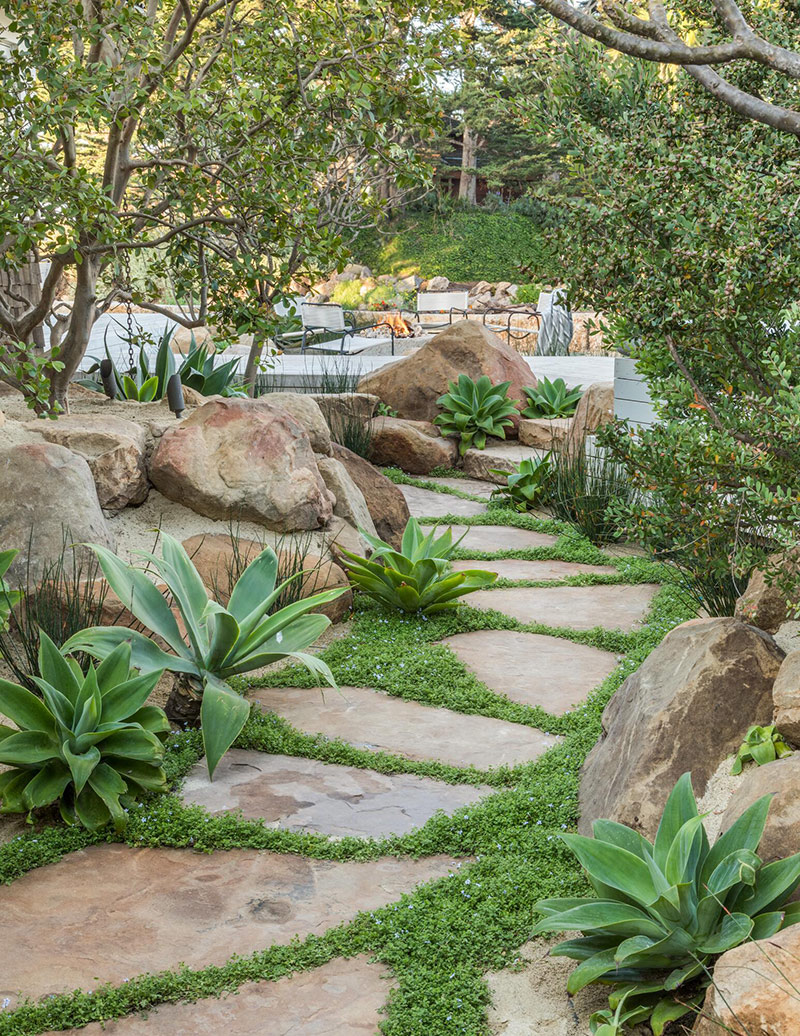

Shrader’s intent was a series of related outdoor experiences, just as Paone’s vision was the human experience in the home itself. The tone is warm and welcoming, reflecting the owner’s generosity, with bursts of random beauty that invite exploration. The homeowner loves it, and who wouldn’t? As Paone says, “this property lives much bigger than it is.”
Entertaining Beach Style
When landscape designer Scott Shrader embraces a project, he mulls the must-haves: lighting, comfortable seating, a place to put your drink, and a focal point of warmth such as a firepit. When the setting is spectacular, as it is in the Sandbox, Shrader trains his design skills on patterns of natural flow that lead to the view. “I love to create space for entertaining family and friends,” says the West Hollywood designer. The owner of the Sandbox loves to entertain, and Shrader and she have staged some memorable gatherings on the coastal property. It also gives Shrader the chance to check in on the property’s plant life and enjoy its beauty.
Shrader, the author of The Art of Outdoor Living: Gardens for Entertaining Family and Friends (Rizzoli), loves landscape designs —and gatherings—that offer mystery, surprise, and delight. Outdoor parties are for celebrating friends, family, and the earth’s beauty, he says: “The experience is to be in the space, to live it.”
For more information, visit shraderdesign.com; cjpaone.com.



